-
 Bitcoin
Bitcoin $107,341.7259
0.15% -
 Ethereum
Ethereum $2,438.6204
0.70% -
 Tether USDt
Tether USDt $1.0003
-0.02% -
 XRP
XRP $2.1866
1.94% -
 BNB
BNB $649.0952
0.36% -
 Solana
Solana $150.9602
5.63% -
 USDC
USDC $0.9999
0.00% -
 TRON
TRON $0.2742
0.40% -
 Dogecoin
Dogecoin $0.1645
1.93% -
 Cardano
Cardano $0.5669
1.18% -
 Hyperliquid
Hyperliquid $37.8286
4.19% -
 Bitcoin Cash
Bitcoin Cash $491.4669
-2.74% -
 Sui
Sui $2.8150
3.06% -
 Chainlink
Chainlink $13.4184
2.91% -
 UNUS SED LEO
UNUS SED LEO $9.0809
0.27% -
 Avalanche
Avalanche $18.0295
2.60% -
 Stellar
Stellar $0.2396
1.19% -
 Toncoin
Toncoin $2.8587
0.13% -
 Shiba Inu
Shiba Inu $0.0...01160
2.59% -
 Litecoin
Litecoin $86.4192
1.45% -
 Hedera
Hedera $0.1486
1.19% -
 Monero
Monero $308.4324
0.87% -
 Polkadot
Polkadot $3.4202
1.43% -
 Bitget Token
Bitget Token $4.6436
-0.34% -
 Dai
Dai $0.9998
-0.02% -
 Ethena USDe
Ethena USDe $1.0002
0.00% -
 Uniswap
Uniswap $7.1527
3.29% -
 Pi
Pi $0.5357
-8.45% -
 Pepe
Pepe $0.0...09588
4.61% -
 Aave
Aave $259.9759
0.81%
How to apply for Bybit's API? Automated trading configuration guide
Bybit's API enables automated trading; apply for access, set permissions, and configure your strategy on platforms like TradingView or with Python scripts.
May 10, 2025 at 10:56 am
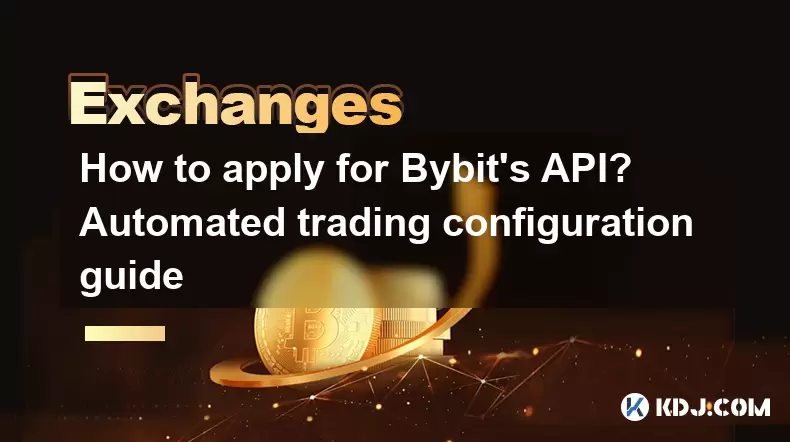
Bybit is a popular cryptocurrency exchange that offers a robust API for traders looking to automate their trading strategies. In this guide, we will walk you through the process of applying for Bybit's API and configuring it for automated trading. Let's get started.
Applying for Bybit's API
To begin using Bybit's API, you need to apply for API access. Here's how you can do it:
- Log into your Bybit account. If you don't have an account, you'll need to create one first.
- Navigate to the API Management section. You can find this in the account settings or under the "API" tab in your user profile.
- Create a new API key. Click on the "Create New Key" button. You'll be prompted to name your key and set permissions. Make sure to choose the appropriate permissions based on your trading needs.
- Enable the API key. After creation, you'll need to enable the key. Bybit will send a confirmation code to your registered email. Enter the code to activate your API key.
- Secure your API key. Once activated, you'll see your API Key and Secret Key. Make sure to save these securely, as you won't be able to view the Secret Key again after closing the page.
Configuring API Permissions
Bybit allows you to set specific permissions for your API key. Here's what you need to know:
- Read Permissions: These allow the API to view your account information, such as balance and order history. If you're only looking to monitor your account, you can enable these permissions.
- Trade Permissions: These allow the API to execute trades on your behalf. If you're setting up automated trading, you'll need to enable these permissions.
- Withdraw Permissions: These allow the API to withdraw funds from your account. Be cautious with these permissions and only enable them if absolutely necessary.
When setting permissions, consider the principle of least privilege. Only enable the permissions necessary for your trading strategy.
Setting Up Automated Trading
Once you have your API key set up, you can start configuring your automated trading system. Here's how to do it:
- Choose a trading platform or software. There are several platforms available that support Bybit's API, such as TradingView, 3Commas, or custom scripts in Python using libraries like CCXT.
- Configure the API connection. In your chosen platform, you'll need to enter your Bybit API Key and Secret Key. Make sure to enter these accurately to avoid connection issues.
- Set up your trading strategy. Depending on the platform, you'll need to define your trading strategy. This could involve setting up indicators, entry and exit rules, and risk management parameters.
- Test your strategy. Before going live, it's crucial to test your strategy in a demo or paper trading environment. This allows you to see how your strategy performs without risking real funds.
- Go live. Once you're satisfied with your strategy's performance, you can switch to live trading. Monitor your trades closely at first to ensure everything is working as expected.
Security Considerations
When using Bybit's API for automated trading, security should be a top priority. Here are some best practices:
- Use strong, unique passwords for your Bybit account and any trading platforms you use.
- Enable two-factor authentication (2FA) on your Bybit account to add an extra layer of security.
- Regularly review your API keys and permissions. If you suspect any unauthorized activity, revoke your API keys immediately.
- Use IP whitelisting if available. This restricts API access to specific IP addresses, adding another layer of security.
- Keep your API keys and Secret Keys secure. Never share them with anyone and consider using a secure password manager.
Troubleshooting Common Issues
Even with careful setup, you may encounter issues when using Bybit's API. Here are some common problems and how to resolve them:
- Connection Errors: If you're having trouble connecting to Bybit's API, double-check your API Key and Secret Key for accuracy. Also, ensure your internet connection is stable.
- Permission Errors: If your API key doesn't have the necessary permissions, you'll encounter errors when trying to execute trades. Review and adjust your permissions as needed.
- Rate Limit Exceeded: Bybit's API has rate limits to prevent abuse. If you exceed these limits, you'll need to wait before making more requests. Consider implementing rate limiting in your trading software to avoid this issue.
- Order Execution Issues: If your orders aren't executing as expected, check your trading strategy and ensure it's correctly configured. Also, monitor Bybit's system status for any known issues.
Optimizing Your Trading Strategy
To get the most out of Bybit's API and your automated trading system, consider these optimization tips:
- Backtest Your Strategy: Use historical data to test your strategy's performance over time. This can help you refine your entry and exit rules.
- Monitor and Adjust: Automated trading requires ongoing monitoring. Regularly review your strategy's performance and make adjustments as needed.
- Diversify Your Strategies: Consider running multiple strategies simultaneously to spread risk. Different strategies may perform better under different market conditions.
- Use Risk Management: Implement stop-loss orders and position sizing rules to manage risk. Never risk more than you can afford to lose.
Frequently Asked Questions
Q: Can I use Bybit's API for both spot and futures trading?
A: Yes, Bybit's API supports both spot and futures trading. When setting up your API key, you can specify which markets you want to access.
Q: Is there a limit to the number of API keys I can create on Bybit?
A: Bybit allows you to create multiple API keys, but there may be a limit based on your account type. Check Bybit's official documentation for the most up-to-date information.
Q: How often should I rotate my API keys for security?
A: It's a good practice to rotate your API keys periodically, such as every few months. This helps maintain security and reduces the risk of unauthorized access.
Q: Can I use Bybit's API on mobile devices?
A: Yes, you can use Bybit's API on mobile devices if your chosen trading platform or software supports mobile access. Ensure your device is secure and use a VPN if connecting over public Wi-Fi.
Disclaimer:info@kdj.com
The information provided is not trading advice. kdj.com does not assume any responsibility for any investments made based on the information provided in this article. Cryptocurrencies are highly volatile and it is highly recommended that you invest with caution after thorough research!
If you believe that the content used on this website infringes your copyright, please contact us immediately (info@kdj.com) and we will delete it promptly.
- AI Token Taking Over: Why Smart Investors are Eyeing Audited Crypto Ruvi AI
- 2025-06-29 04:30:12
- Ethereum, AI Tokens, and Growth: Is Ruvi AI the Next Big Thing?
- 2025-06-29 04:30:12
- Hedera Price: Decoding Technical Signals and Upside Potential
- 2025-06-29 04:50:13
- Altcoin Rally on the Horizon? Decoding the Potential Boom
- 2025-06-29 04:35:12
- On-Chain Data Deep Dive: Altcoin Growth & Transaction Volume Insights
- 2025-06-29 05:30:13
- Cryptos, Real Growth, 2025: Navigating the Landscape
- 2025-06-29 05:30:13
Related knowledge
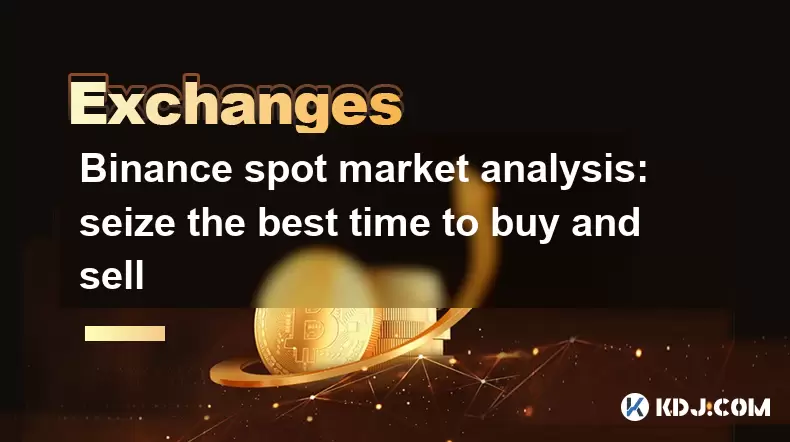
Binance spot market analysis: seize the best time to buy and sell
Jun 19,2025 at 04:56pm
Understanding the Binance Spot MarketThe Binance spot market is one of the most popular platforms for cryptocurrency trading globally. It allows users to trade digital assets at current market prices, making it essential for traders aiming to buy low and sell high. Unlike futures or margin trading, spot trading involves direct ownership of the asset aft...
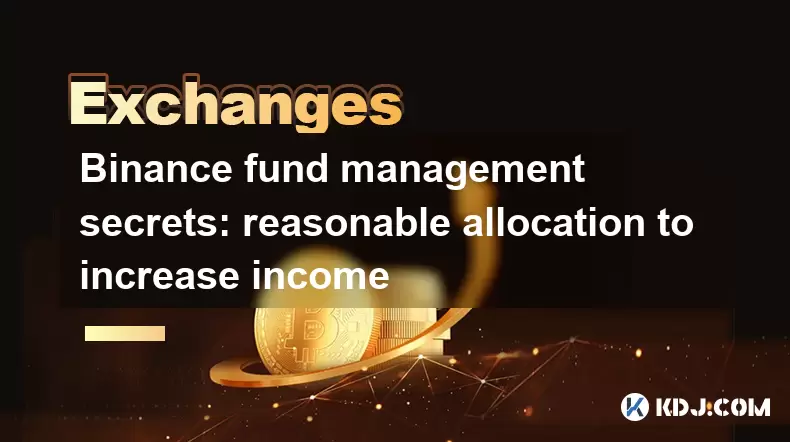
Binance fund management secrets: reasonable allocation to increase income
Jun 22,2025 at 02:29pm
Understanding Binance Fund ManagementBinance fund management involves strategic allocation of your cryptocurrency assets to optimize returns while managing risk. The key to successful fund management lies in understanding how different investment options on the Binance platform can be utilized to create a diversified portfolio. This includes spot tradin...
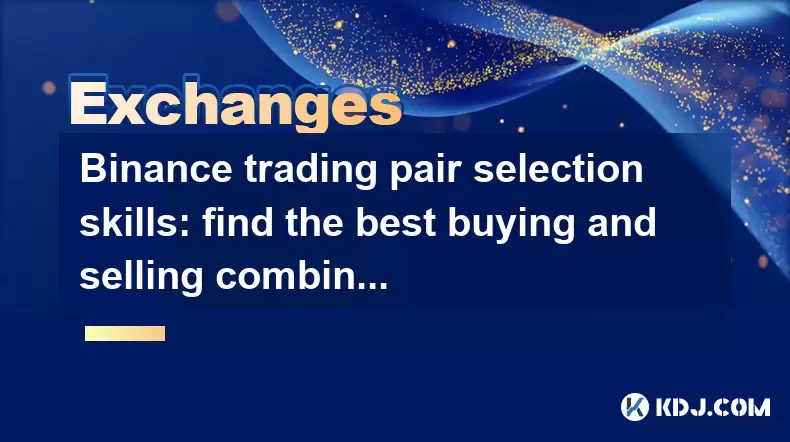
Binance trading pair selection skills: find the best buying and selling combination
Jun 23,2025 at 02:49am
Understanding the Basics of Trading Pairs on BinanceBefore diving into trading pair selection skills, it's essential to understand what a trading pair is. On Binance, a trading pair refers to two cryptocurrencies that can be traded against each other. For example, BTC/USDT means Bitcoin is being traded against Tether. Each trading pair has its own liqui...

Binance new coin mining strategy: participate in Launchpool to earn income
Jun 23,2025 at 11:56am
What is Binance Launchpool and how does it work?Binance Launchpool is a feature introduced by the world’s largest cryptocurrency exchange, Binance, to allow users to earn new tokens through staking. This platform enables users to stake their existing cryptocurrencies (such as BNB, BUSD, or other supported assets) in exchange for newly launched tokens. T...
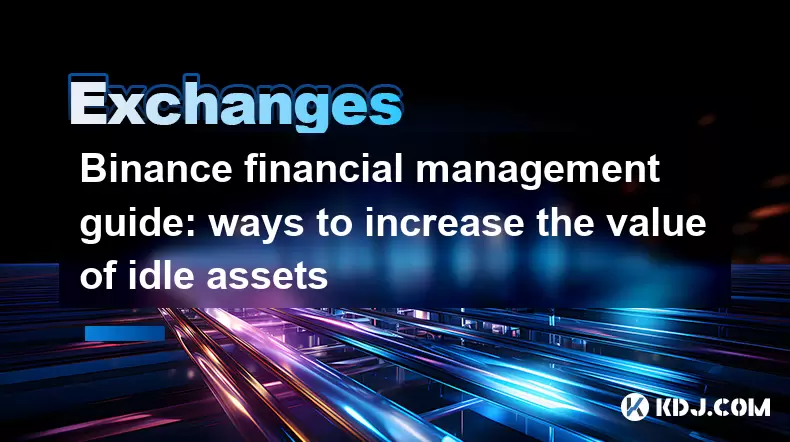
Binance financial management guide: ways to increase the value of idle assets
Jun 19,2025 at 11:22pm
Understanding Idle Assets in the Cryptocurrency SpaceIn the fast-paced world of cryptocurrency, idle assets refer to digital currencies that are not actively being used for trading, staking, or yield farming. Holding these funds in a wallet without utilizing them means missing out on potential growth opportunities. Binance, as one of the leading platfor...
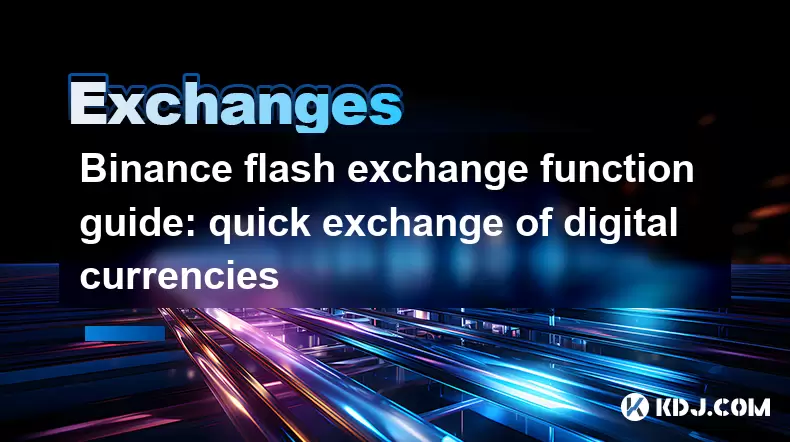
Binance flash exchange function guide: quick exchange of digital currencies
Jun 23,2025 at 12:29pm
What is the Binance Flash Exchange Function?The Binance Flash Exchange function is a powerful tool designed to allow users to instantly swap between supported cryptocurrencies without the need for placing traditional buy/sell orders. This feature simplifies the trading process by offering a direct exchange mechanism, eliminating the requirement to conve...

Binance spot market analysis: seize the best time to buy and sell
Jun 19,2025 at 04:56pm
Understanding the Binance Spot MarketThe Binance spot market is one of the most popular platforms for cryptocurrency trading globally. It allows users to trade digital assets at current market prices, making it essential for traders aiming to buy low and sell high. Unlike futures or margin trading, spot trading involves direct ownership of the asset aft...

Binance fund management secrets: reasonable allocation to increase income
Jun 22,2025 at 02:29pm
Understanding Binance Fund ManagementBinance fund management involves strategic allocation of your cryptocurrency assets to optimize returns while managing risk. The key to successful fund management lies in understanding how different investment options on the Binance platform can be utilized to create a diversified portfolio. This includes spot tradin...

Binance trading pair selection skills: find the best buying and selling combination
Jun 23,2025 at 02:49am
Understanding the Basics of Trading Pairs on BinanceBefore diving into trading pair selection skills, it's essential to understand what a trading pair is. On Binance, a trading pair refers to two cryptocurrencies that can be traded against each other. For example, BTC/USDT means Bitcoin is being traded against Tether. Each trading pair has its own liqui...

Binance new coin mining strategy: participate in Launchpool to earn income
Jun 23,2025 at 11:56am
What is Binance Launchpool and how does it work?Binance Launchpool is a feature introduced by the world’s largest cryptocurrency exchange, Binance, to allow users to earn new tokens through staking. This platform enables users to stake their existing cryptocurrencies (such as BNB, BUSD, or other supported assets) in exchange for newly launched tokens. T...

Binance financial management guide: ways to increase the value of idle assets
Jun 19,2025 at 11:22pm
Understanding Idle Assets in the Cryptocurrency SpaceIn the fast-paced world of cryptocurrency, idle assets refer to digital currencies that are not actively being used for trading, staking, or yield farming. Holding these funds in a wallet without utilizing them means missing out on potential growth opportunities. Binance, as one of the leading platfor...

Binance flash exchange function guide: quick exchange of digital currencies
Jun 23,2025 at 12:29pm
What is the Binance Flash Exchange Function?The Binance Flash Exchange function is a powerful tool designed to allow users to instantly swap between supported cryptocurrencies without the need for placing traditional buy/sell orders. This feature simplifies the trading process by offering a direct exchange mechanism, eliminating the requirement to conve...
See all articles

























































































